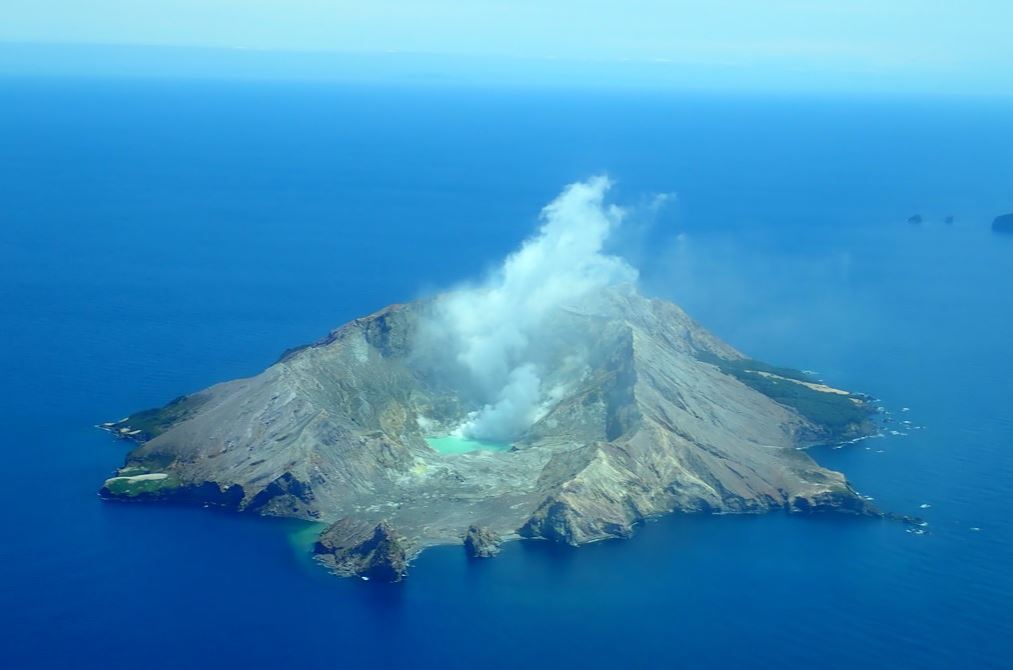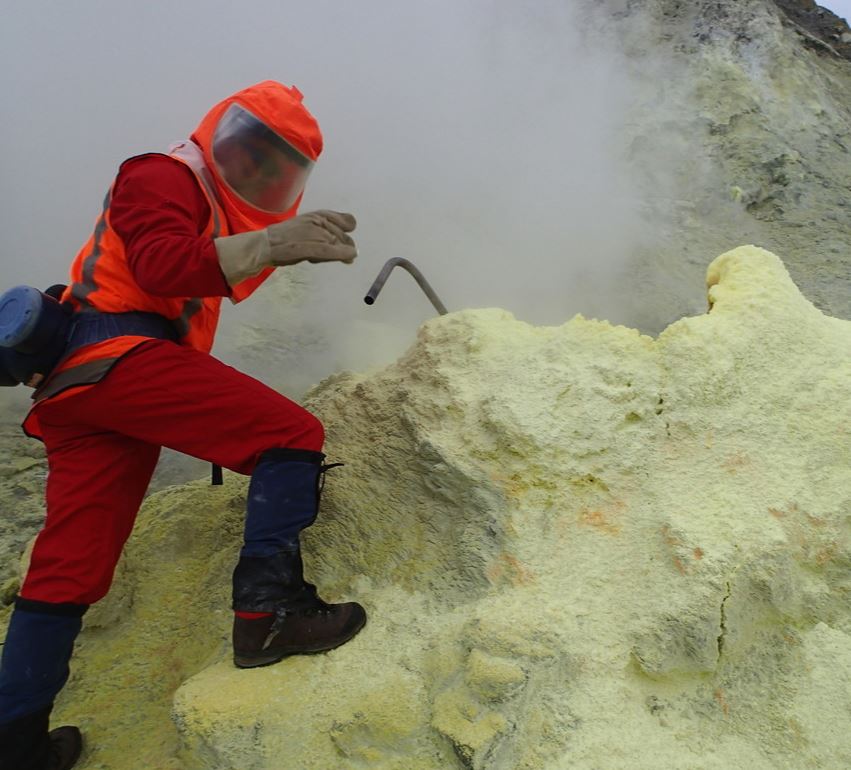Volcanoes
Whakaari/White Island is currently New Zealand’s most active cone volcano, sitting 48 kilometres offshore. The cone has been built up by continuous volcanic activity over the past 150,000 years. The island covers an area of around 325 hectares and this is only about 30 per cent of the volcano’s mass - the rest is under the sea. Even so, it is only about half the size of other cone volcanoes like Mount Ruapehu, Tongariro or Taranaki.
Captain James Cook named the island White Island in 1769. The full Māori name is Te Puia o Whakaari – The Dramatic Volcano. The official NZ Gazetted name was changed to Whakaari/White Island in 1997. Whakaari/White Island is privately owned. In 1953 it was declared a private scenic reserve and has been the focus of tourism activities along with geological and ecological science.
A sulphur mining venture began on the island in 1885, but this stopped abruptly in 1914 when part of the crater wall collapsed, and a landslide destroyed the sulphur mine and miners' village. Ten lives were lost. Another relatively short-lived mining venture began in the 1920s and some of the buildings remain on the island to this day.
GeoNet continuously remotely monitors volcanic activity with webcams, seismometers (earthquake activity), acoustic sensors (explosion airwave detection), UV spectrometers (SO2 emission rate) and GNSS (ground deformation). Stay in touch with activity here.
2019 Explosive Eruption
A fatal explosive volcanic eruption from vents in the 1978/90 Crater Complex occurred at 2:11pm on Monday 9 December 2019. Tragically some visitors and guides on the island at the time were killed, and many injured. The eruption removed the crater lake, formed new vents and generated landslides into the active crater area.
Previous Eruptions
2016:
On 27 April a short-lived explosive eruption occurred in the evening. The surges from the blast deposited material over the Main Crater floor and onto some of the crater walls. The eruption excavated the floor of the 1978/90 Crater Complex by 13m and a new lake formed in 2018.
In September 2016, for a short period of time, volcanic ash was passively emitted from a vent on the 2012 lava dome.
2012-2013:
An explosive eruption occurred on 5 August 2012 with a period of ash emissions. This was followed by heating in the Crater Lake and the extrusion of a small lava dome Oct-Dec 2012.
Steam and sulphur explosions followed in Feb-April 2013 which removed the lake. By June the lake was re-established.
A further explosive eruption followed on 20 August and again on 4,8 and 11 October 2013. In November 2015 a large landslide slipped into the lake.
1975-2000:
White Island was in eruption from December 1975 to September 2000, the longest and largest historic eruption episode. This eruption episode developed many collapse and explosion craters. For long periods active vents in these craters emitted volcanic ash. Explosive eruptions impacted the Main Crater floor with ballistic bombs/blocks and surges at times. The last major eruption of this episode was in late July 2000 and covered the crater floor area in scoria, also displacing a crater lake and forming a new explosion crater 150 m across.
Older Crater forming eruptions
1971: In July 1971 explosive eruptions formed a crater at the site of Rudolf vent
1968: Rudolf vent established by ash eruptions
1966: Crater formed on 13 November 1966, named Gilliver.
1962: A crater later named Big John formed
1947: A maar like crater appeared in 1947, later named Noisy Nellie
1933: Crater formed by eruptions in April of 1933.


